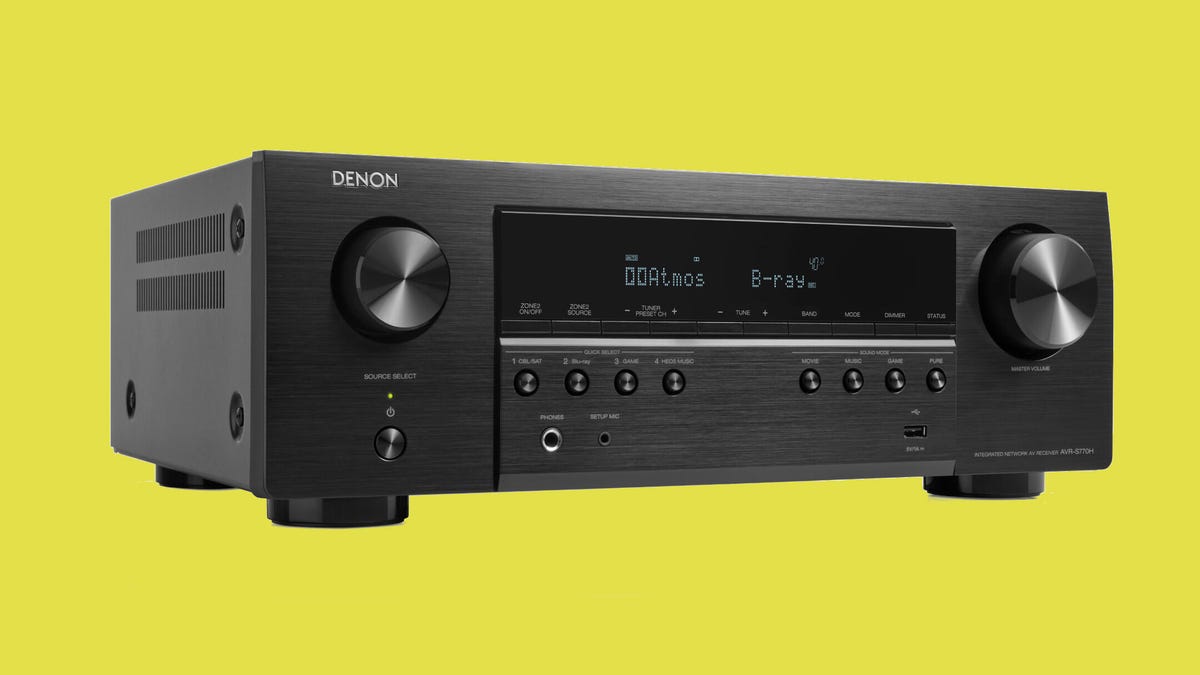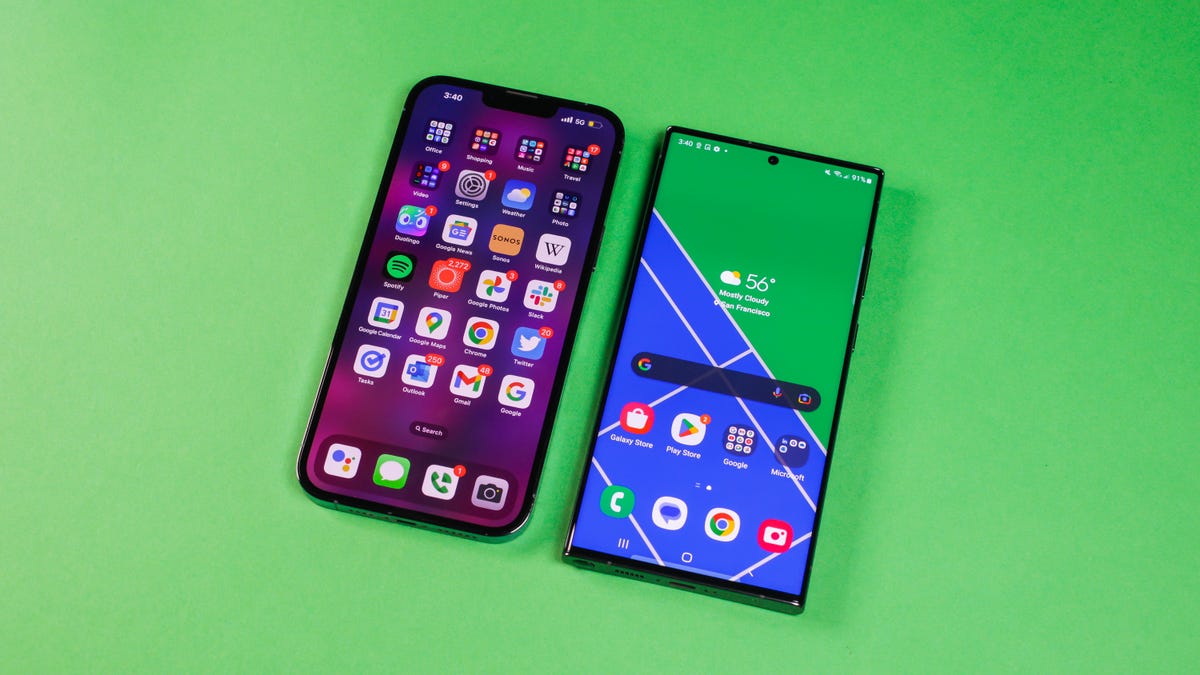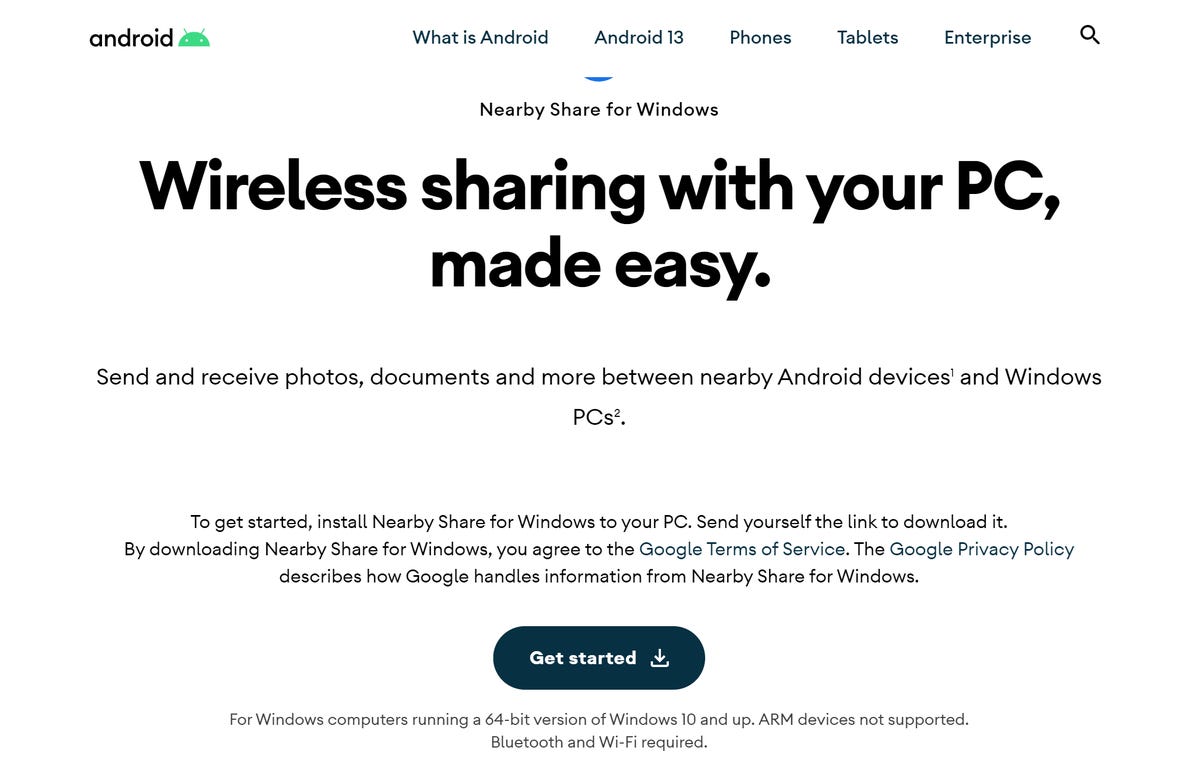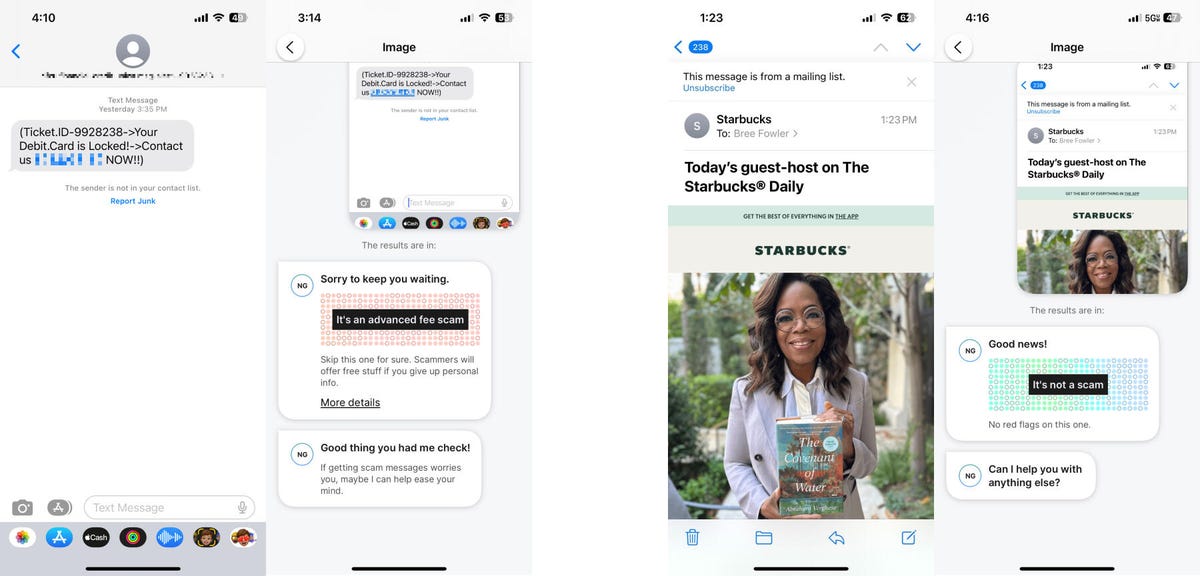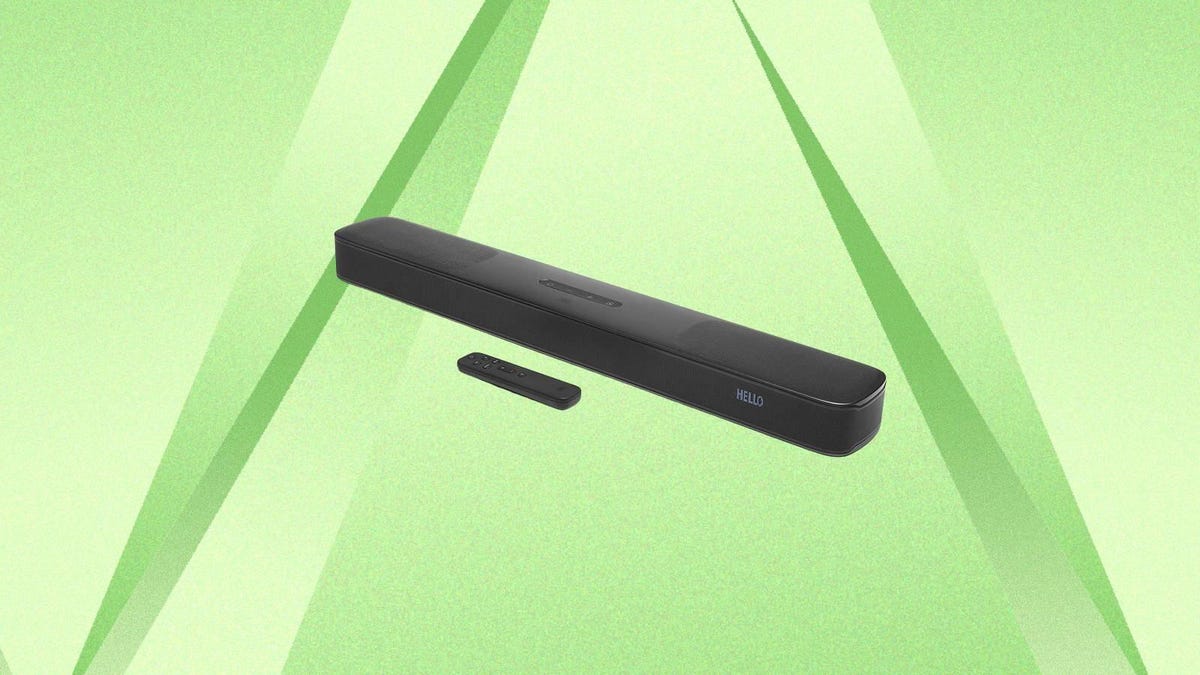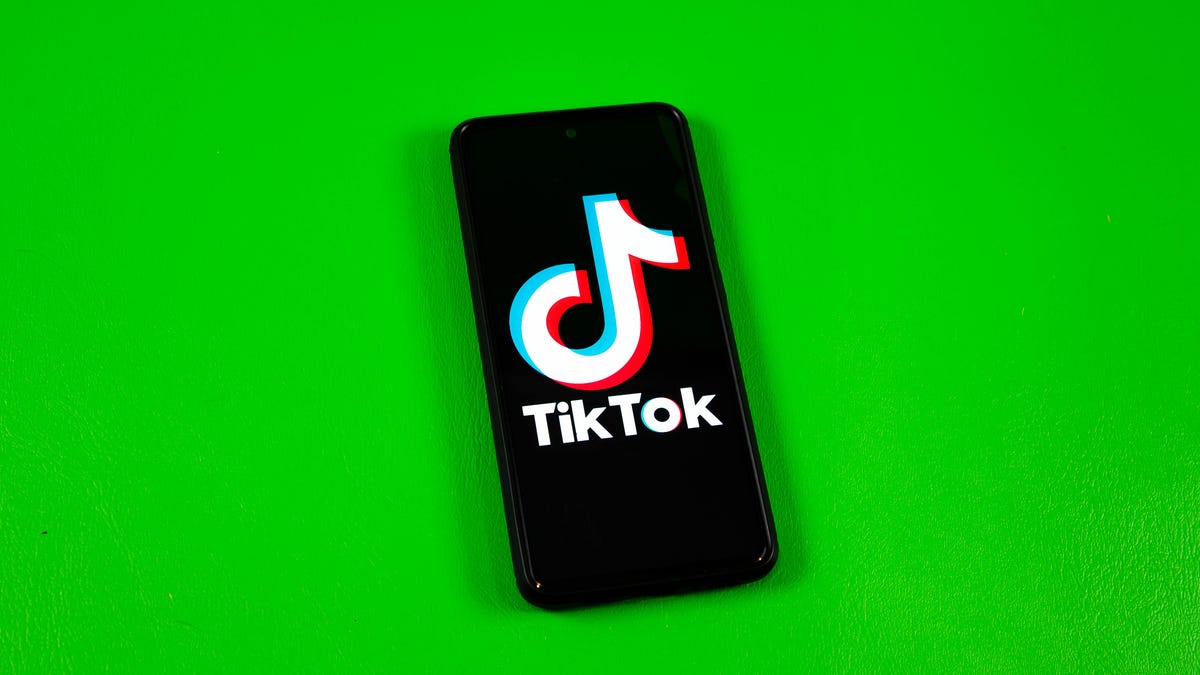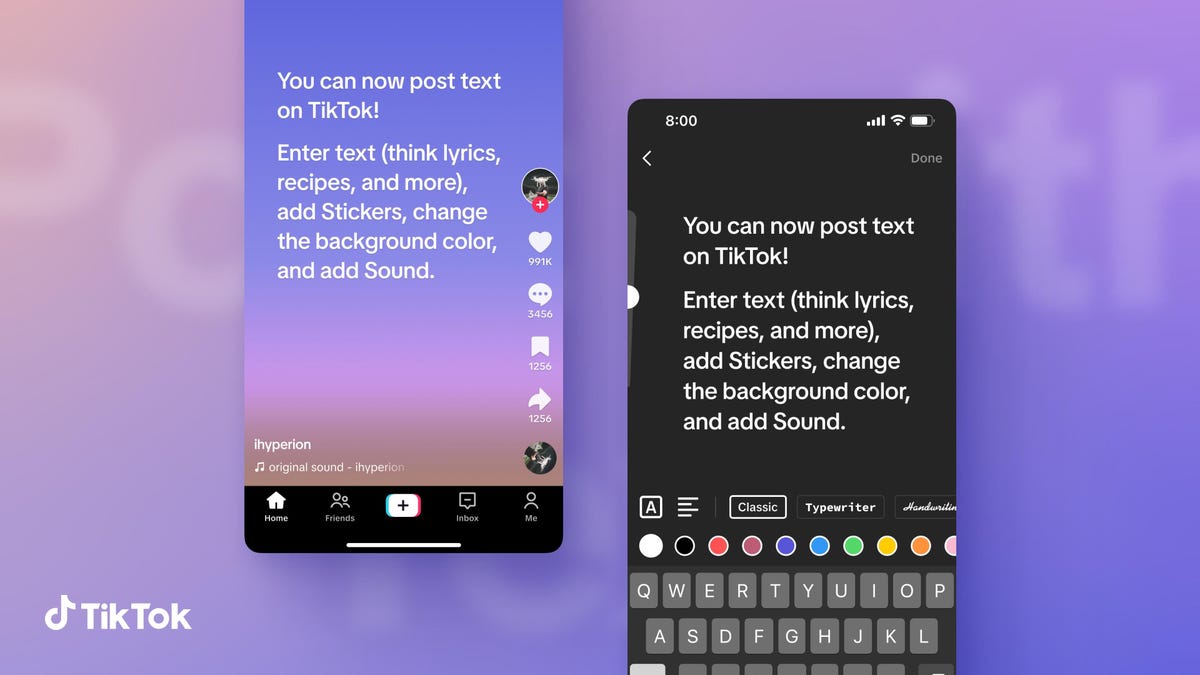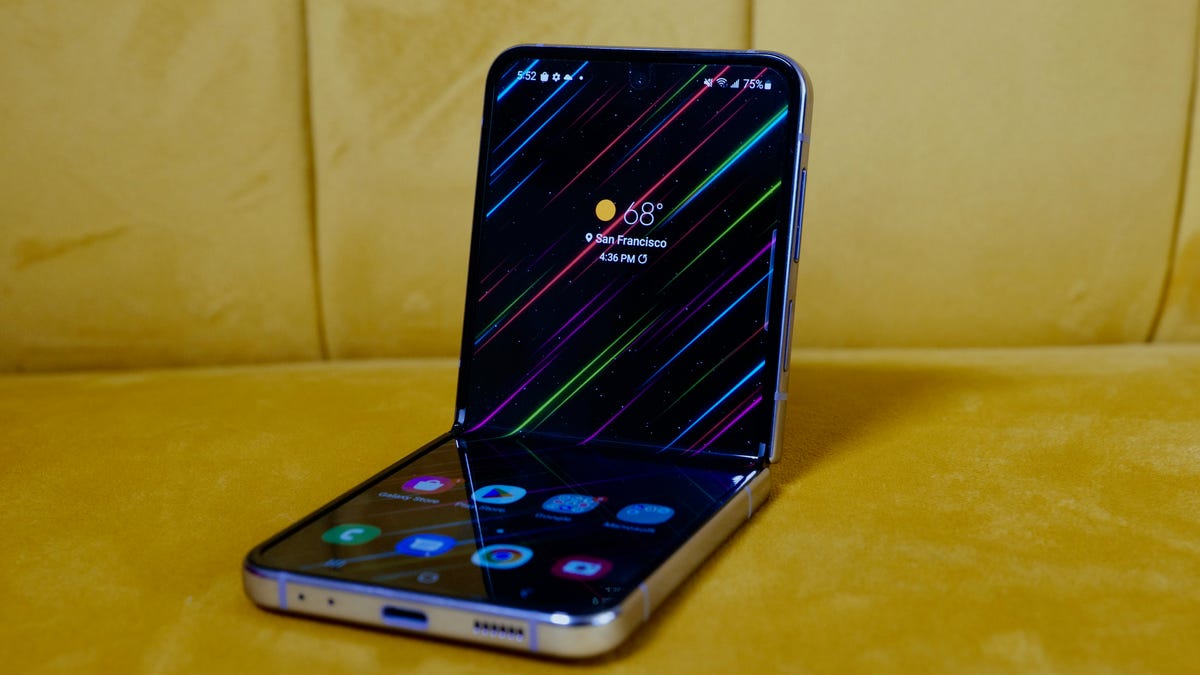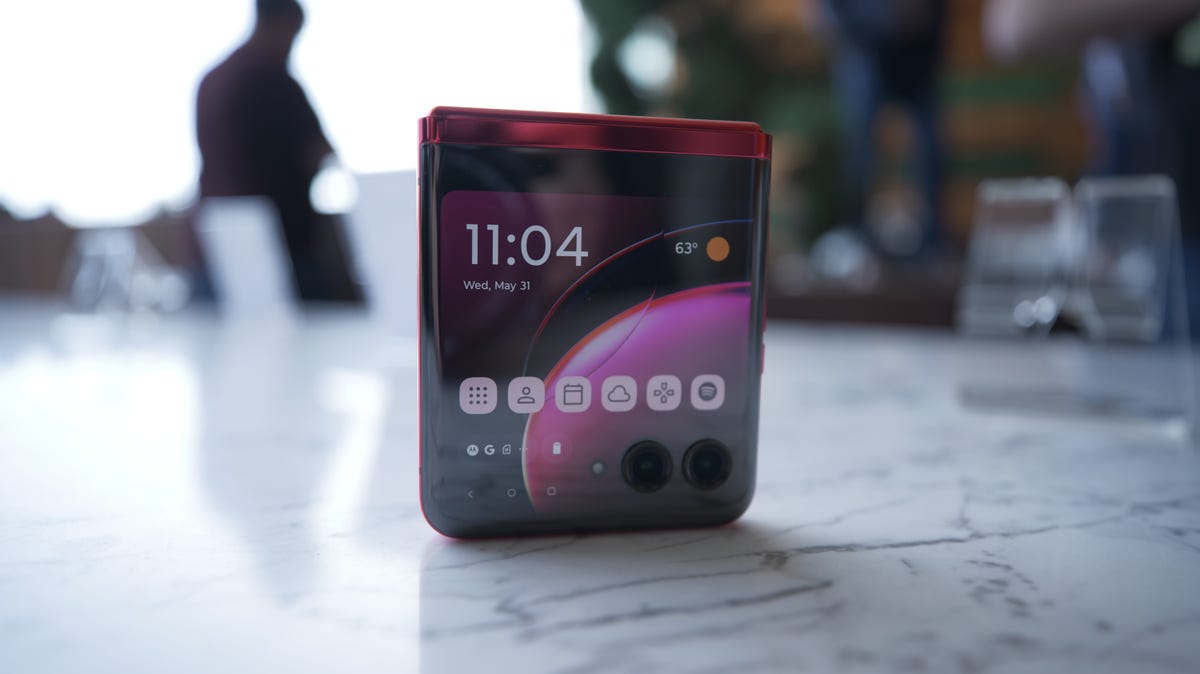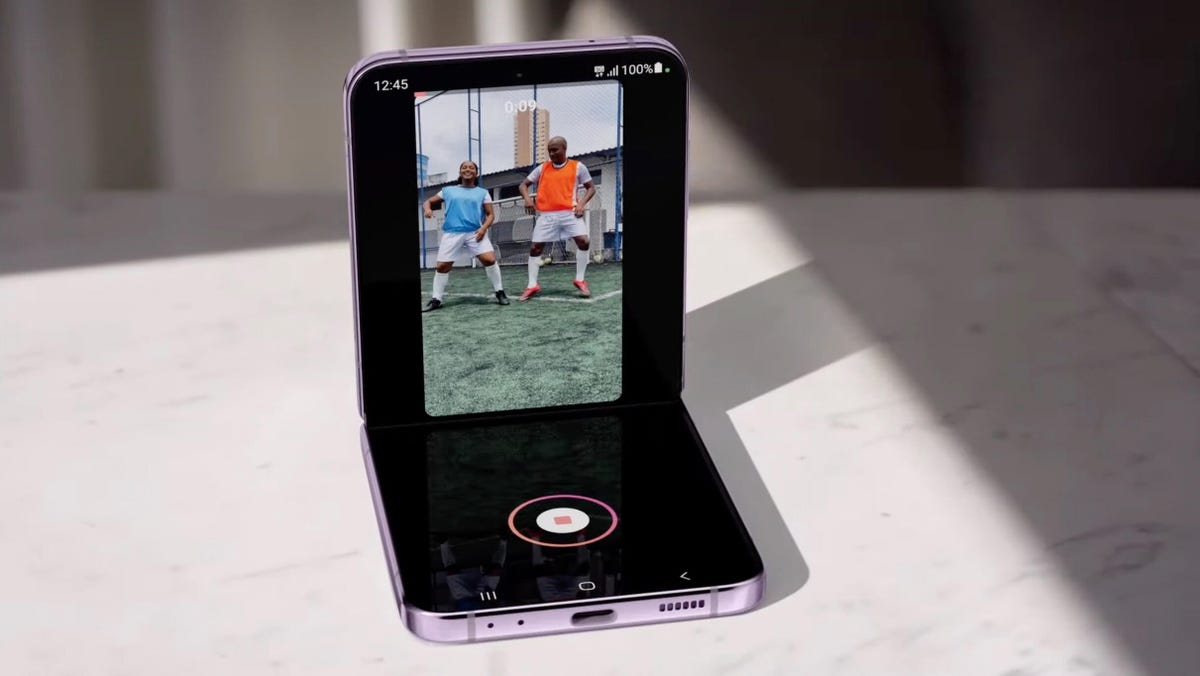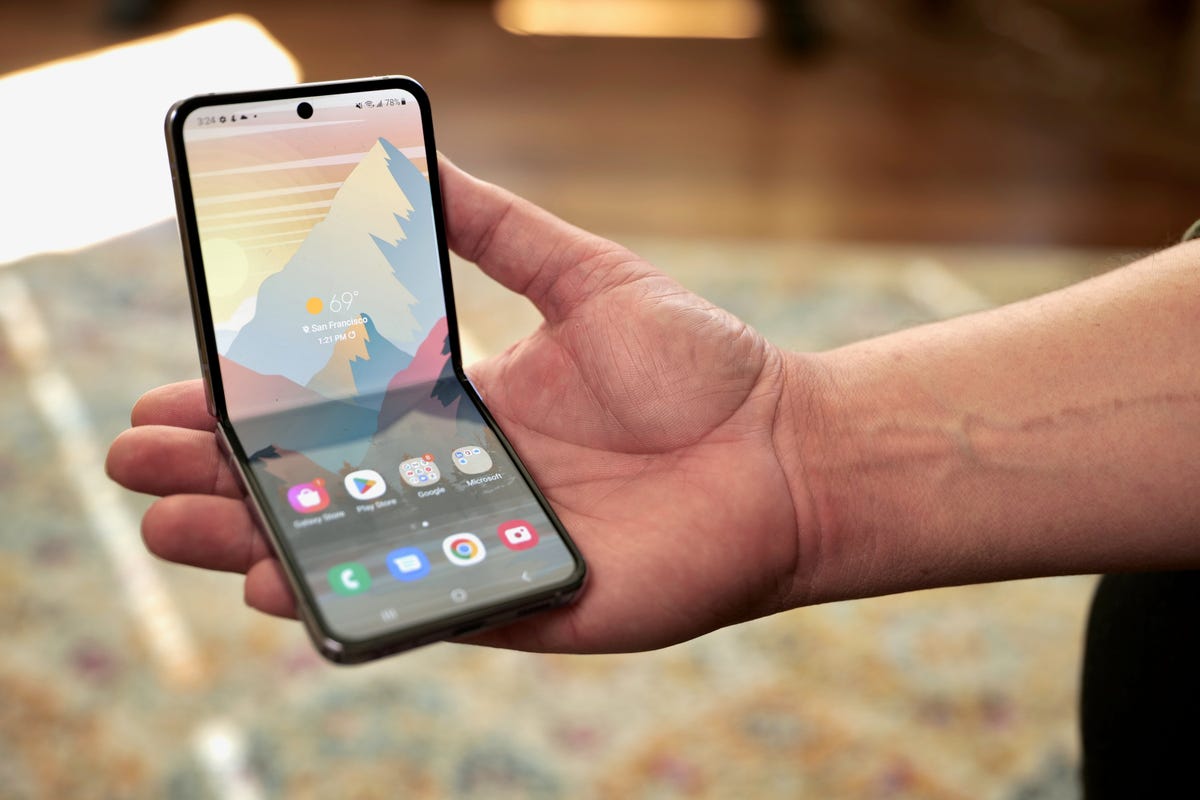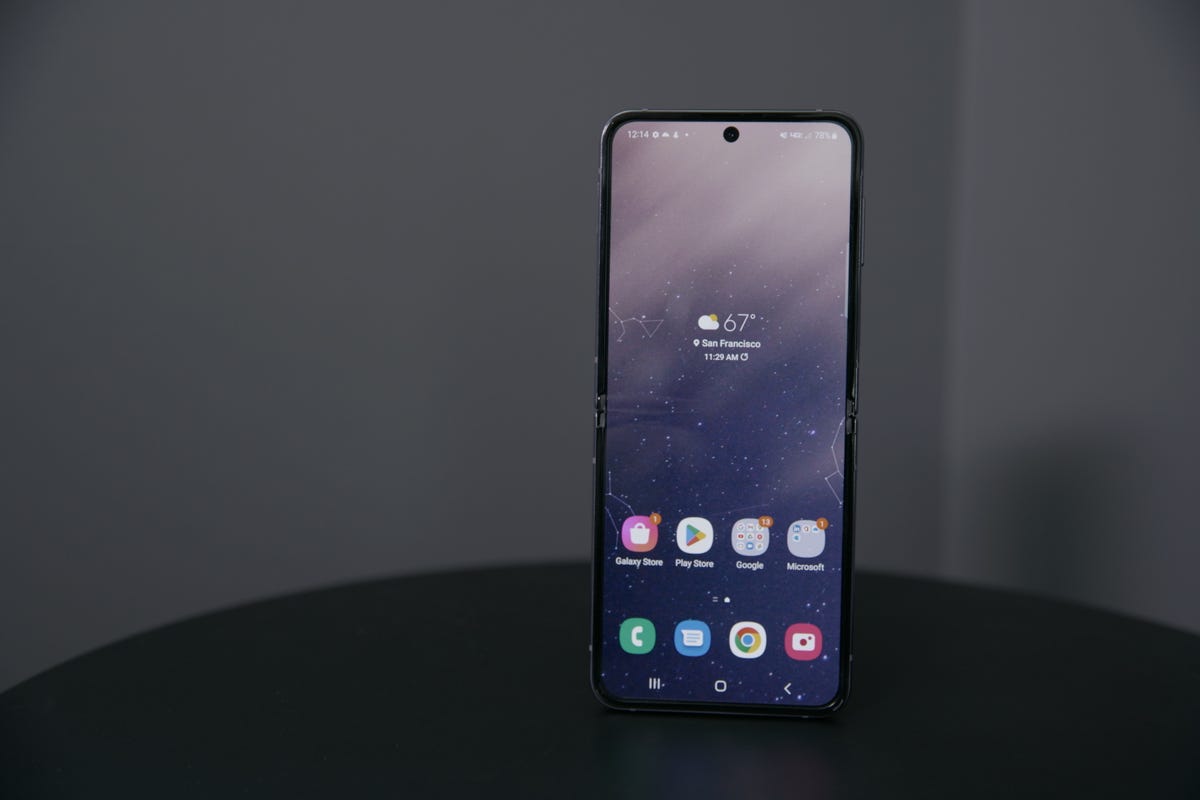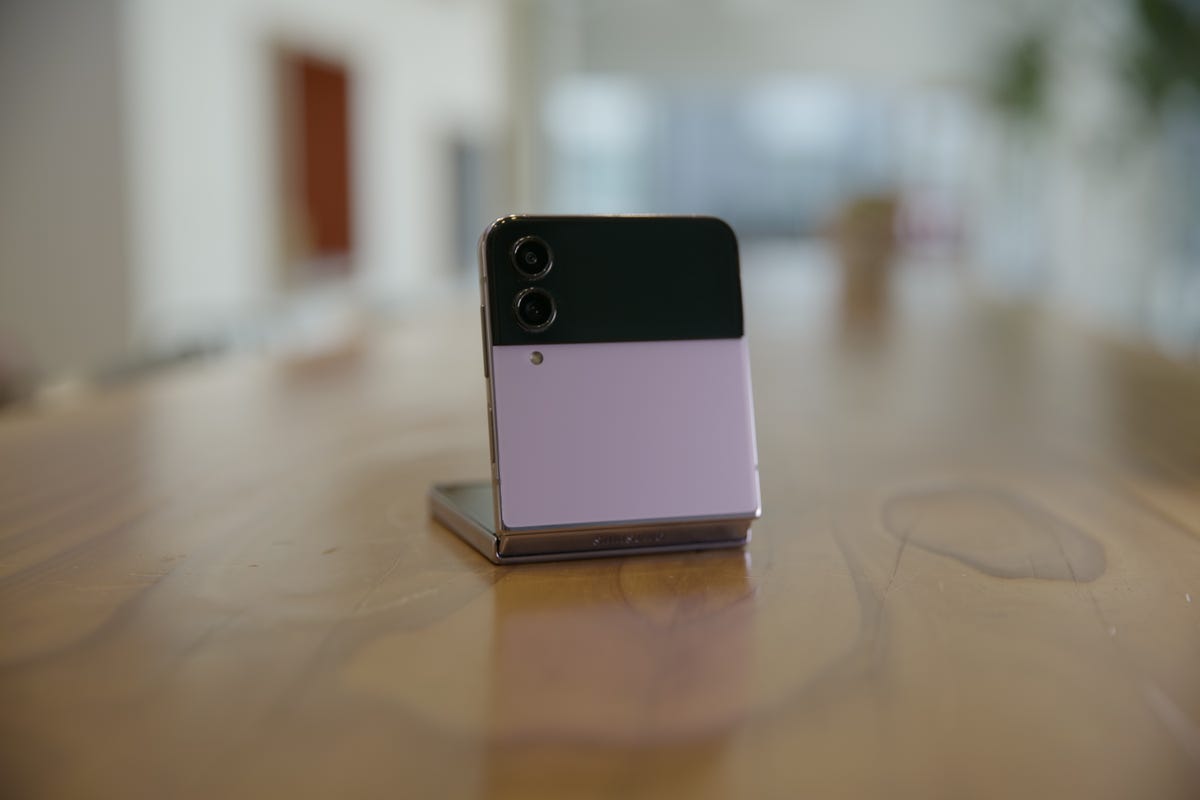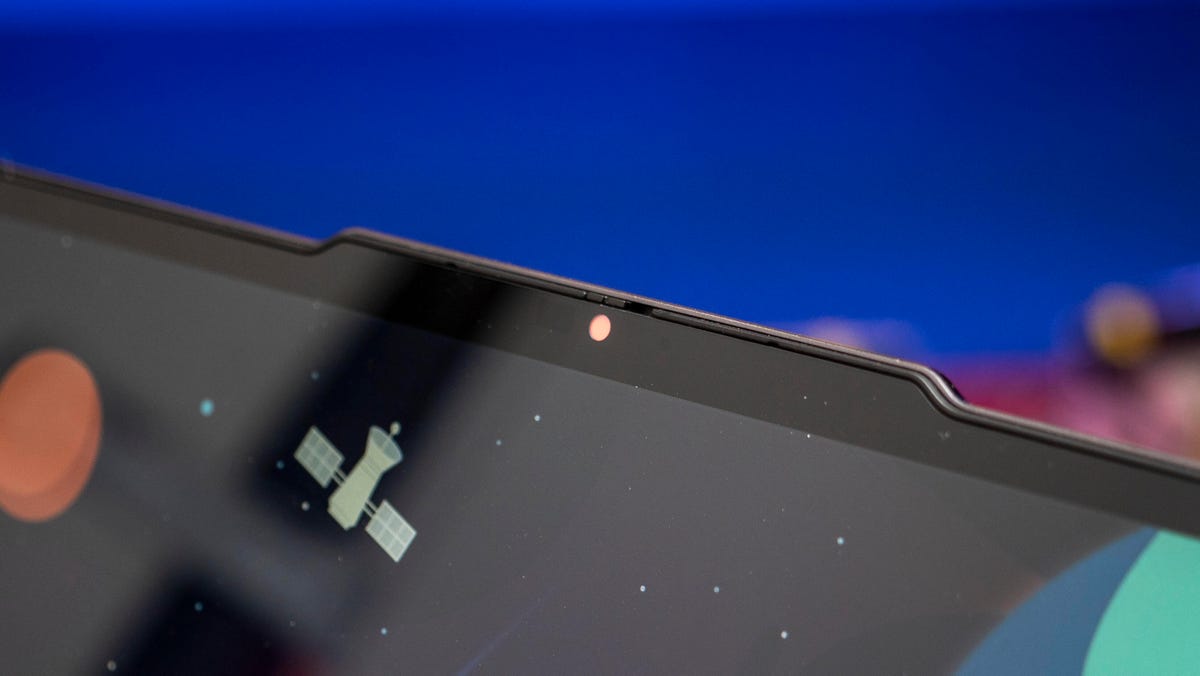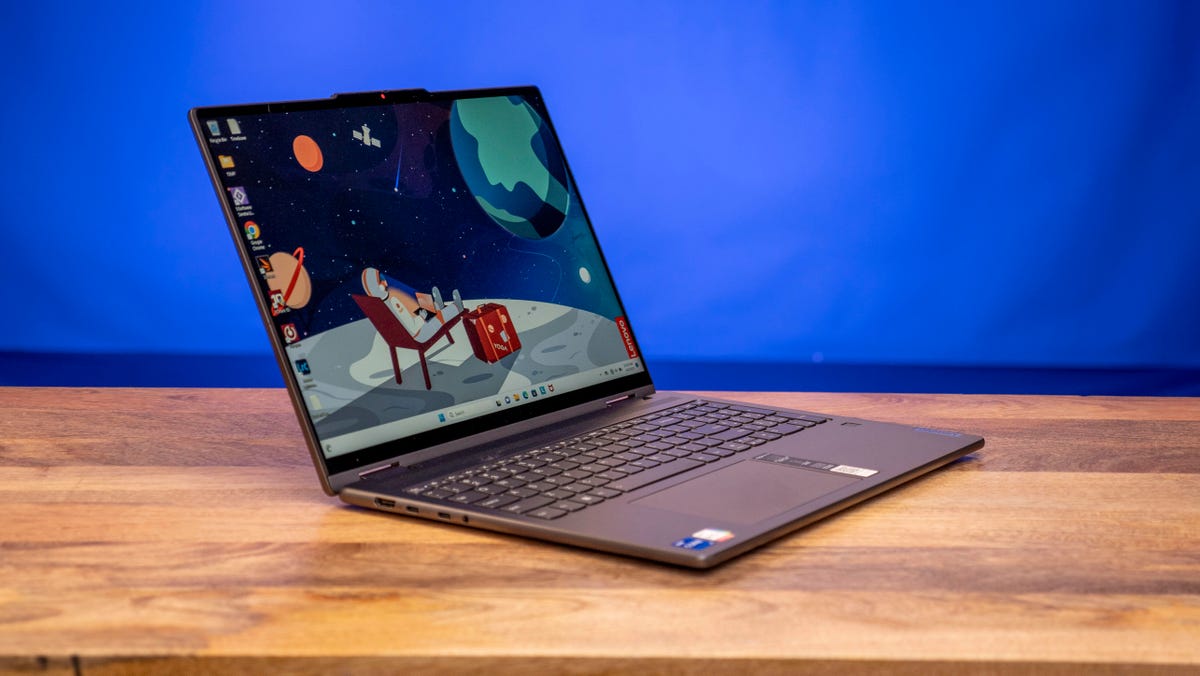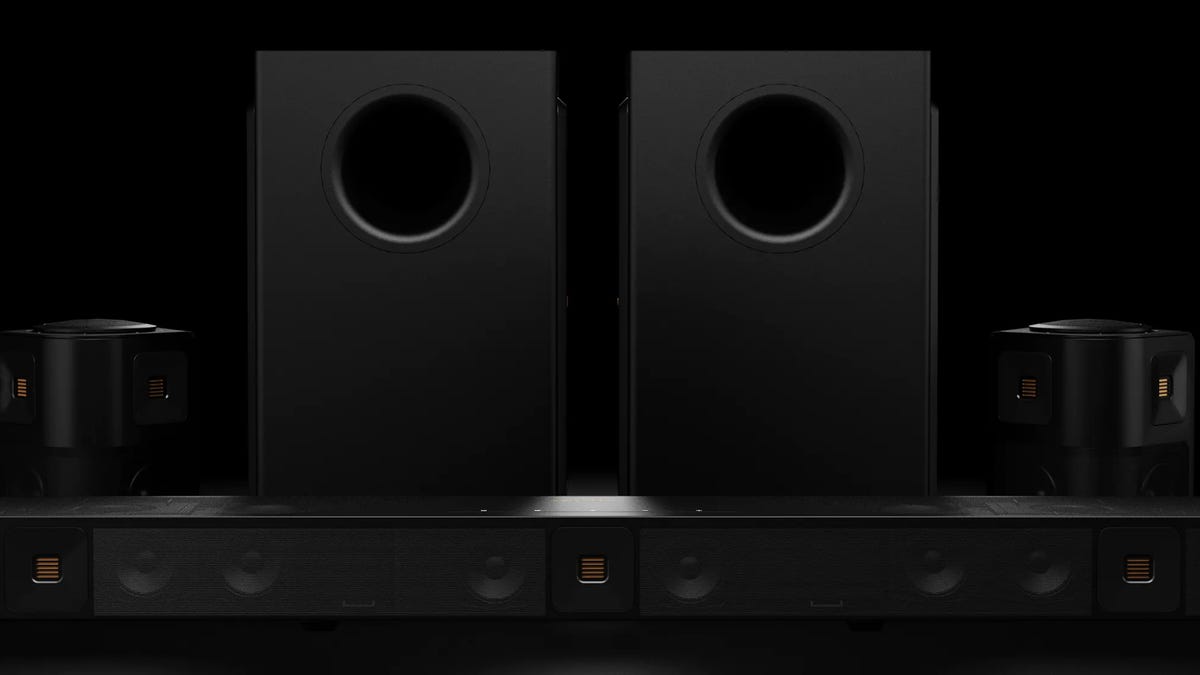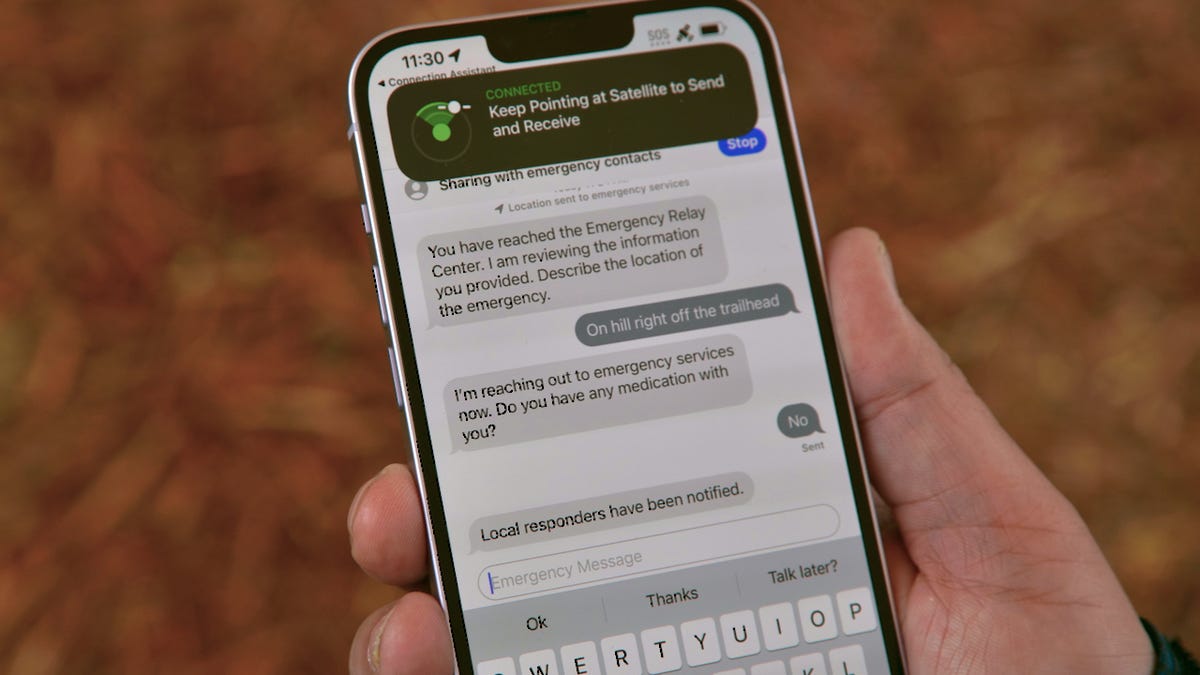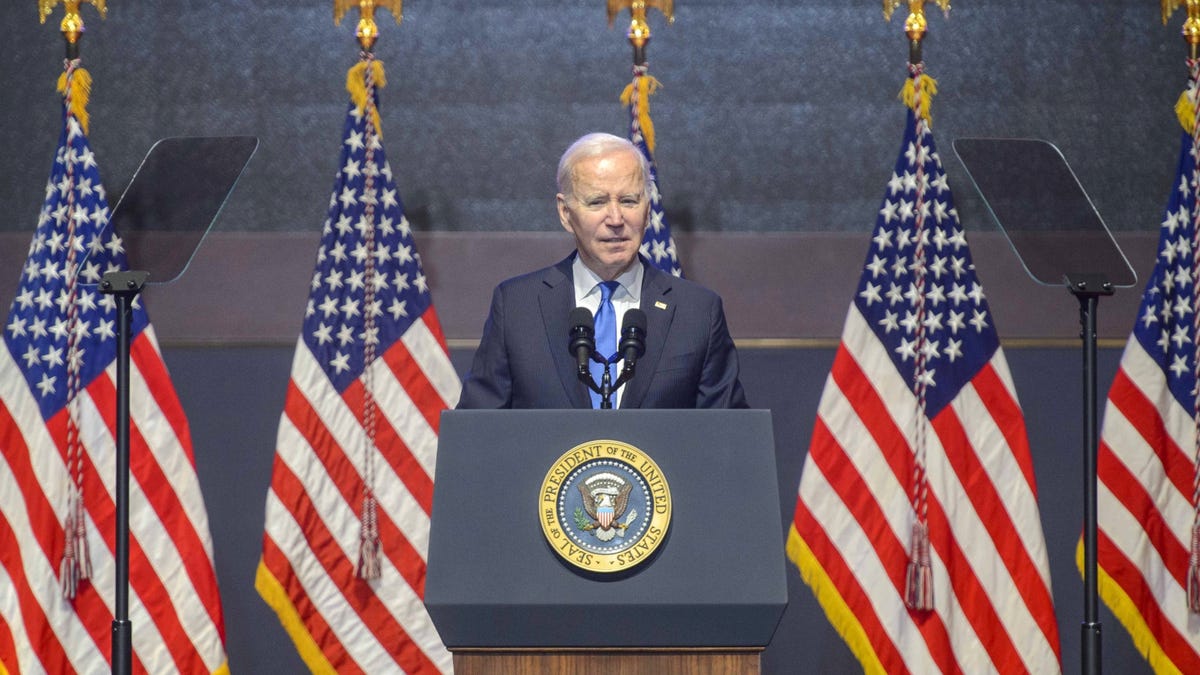Samsung is expected to announce the Galaxy Z Flip 5 this week at its Galaxy Unpacked event on July 26. We will likely learn what’s next for Samsung’s foldable phones and could see the Galaxy Z Fold 5. We won’t know anything for certain until Wednesday, but nearly a year ago we got the Galaxy Z Flip 4. It was a small step forward for Samsung’s pocket-size flip phone, but now it has a new rival in the recently launched — and quite excellent — Motorola Razr Plus. The bar has been raised for Samsung’s smallest foldable and here’s what I think the Galaxy Z Flip 5 needs in order to be a success.
With the Galaxy Z Flip 4, Samsung fine-tuned the phone’s design, added a few new software tricks, and improved staples like nighttime photography and battery life. These are all welcome upgrades that address shortcomings from previous models. However, I’d like to see more features that take advantage of its foldable design on the next version.
TM Roh, the president and head of Samsung’s mobile experience business, recently published a blog post discussing the importance of design when it comes to foldable phones. That has led to further speculation that we’ll learn more about the Z Flip and Z Fold’s future on July 26.
A larger cover screen
After reviewing the Razr Plus, I’m convinced the Galaxy Z Flip 5 needs a bigger cover screen. Motorola’s new phone has a 3.6-inch outer display compared to the Z Flip 4’s 1.9-inch cover screen. You can do a lot with the Razr’s external display, from playing games to browsing Google Maps and typing an email. The Galaxy Z Flip 4’s smaller cover screen is much more limited and is ideal for brief interactions, like sending a canned response to a text message or peeking at your calendar.
You might be wondering why having a larger cover screen is so important if you’re planning to use the phone primarily when it’s open. Even though I haven’t used the new Razr extensively yet, the cover screen seemingly has the potential to add more on-the-go convenience. Since it’s small enough to fit in the palm of my hand when closed, I can imagine it being useful for responding to a text message or flipping through my inbox when I only have one hand free.
If the rumors turn out to be true, Samsung may indeed give the Galaxy Z Flip 5 a larger external screen. The Twitter account Ice Universe, which has a solid history of leaking details about unreleased Samsung products, says the Z Flip 5 will have a 3.4-inch cover display.
More Flex Mode features
Samsung popularized the idea of using flip phones as a built-in tripod for taking photos and videos. Samsung calls this feature Flex Mode, and it allows the Z Flip and Fold to split apps between the top and bottom portions of the display when folded halfway. Samsung has expanded Flex Mode since the original Flip’s launch by adding new features such as the ability to use the bottom portion of the display like a mini trackpad.
While it’s nice to see Samsung brainstorming new ways to put the Z Flip’s nontraditional shape to use, the trackpad functionality isn’t terribly practical, as my colleague Patrick Holland wrote in his review. It feels like a solution looking for a problem rather than a reason to want a foldable phone in the first place.
In the Z Flip 5, I’d like to see Samsung add more functionality to Flex Mode that taps into the phone’s ability to bend and fold in different ways. Having a larger screen on the front could also open up some new possibilities in this regard.
Samsung could take notes from Google and Motorola, both of which have shown some creative uses for foldable phones. The new Razr, for example, can show a preview of a photo being taken on its external screen, enabling the subject to see what they look like before you hit the shutter button. The Pixel Fold will be able to use its dual screens to show translated speech on the outer and inner displays during a conversation, potentially making real-world encounters in different languages less awkward.
To be sure, I won’t know how useful Google’s translation feature is until that capability launches with Android 14. But the use cases that Motorola and Google are pitching seem practical rather than gimmicky, which feels like a step in the right direction for foldables.
A less noticeable crease
One of the biggest challenges with today’s foldables is the crease that runs across the center of the screen. Now that Samsung is heading into the fifth generation of its foldable phones, I’d like to see a crease that’s significantly less noticeable — if not invisible. Oppo and Huawei have done a better job of eliminating the crease in their foldables in recent years, as my colleagues have noted, making me hopeful that Samsung’s next device will show similar progress.
There’s a chance that may very well be the case. Ice Universe also reports that the Z Flip 5 and Fold 5 will have a new hinge that will enable the phones to shut completely when closed, with no gap, a change that may also make the crease more subtle.
Longer battery life
Samsung improved the Galaxy Z Flip 4’s battery life compared to the Z Flip 3, and I’m hoping it continues to do so on the Galaxy Z Flip 5. As noted in CNET’s Galaxy Z Flip 4 review, the phone’s battery can make it through a full day but drains faster if you’re watching video and taking video calls — two tasks that the Z Flip is well-suited for since it can be easily propped up.
Battery life in a phone can never feel long enough, so I’m hoping to see more of an improvement in the Z Flip 5. If the Z Flip 5 runs on the same processor as the Galaxy S23 series, a version of the Qualcomm Snapdragon 8 Gen 2 that’s been optimized for Samsung’s devices, it’s possible we’ll see some gains in power efficiency.
Better cameras
The Galaxy Z Flip 4’s 12-megapixel wide and ultrawide cameras take decent photos, but I’d like to see Samsung bring the Z Flip 5’s cameras up to par with the Galaxy S23’s. Samsung’s nonfolding phone has a 50-megapixel main camera, 12-megapixel ultrawide camera and 10-megapixel telephoto camera.
I’m not expecting Samsung to add a telephoto lens to the Galaxy Z Flip 5, since doing so would make it difficult to increase the size of the cover screen. But I’m hoping Samsung improves the camera in other ways, such as by increasing the resolution or pixel size. In his review, CNET’s Patrick Holland described the Z Flip 4’s cameras as B-grade, showing there’s certainly room for improvement. But if the Galaxy Z Flip 5 inherits the Galaxy S23’s processor, we’ll likely see back-end upgrades that enhance the way photos are processed, too.
Overall, I’m hoping to see Samsung add more functionality that makes the Z Flip stand out, while cutting down on the compromises that need to be made when choosing a foldable phone over a standard phone. Changes like these could go a long way towards making foldables broadly appealing in the way that Samsung envisions.
